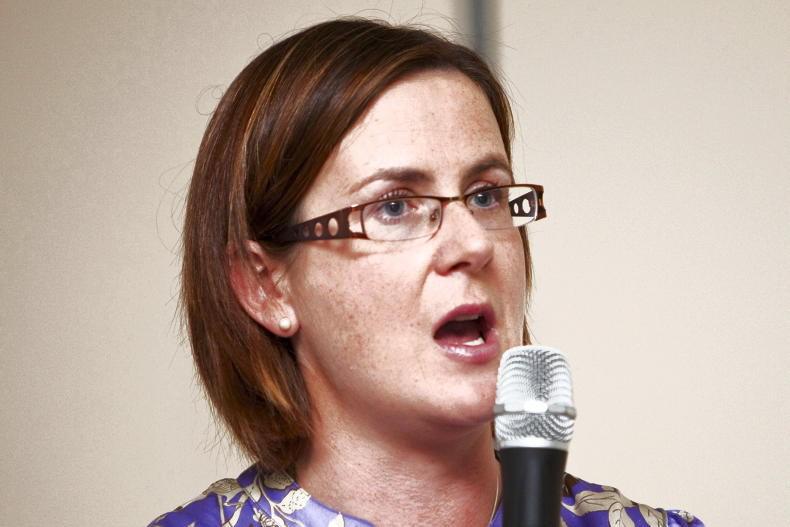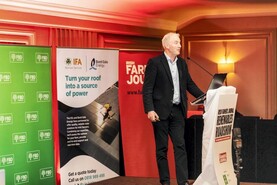Siobhan Kavanagh is the Teagasc Signpost programme communication and engagement specialist, and she outlined some of the changes that have been taking place on the Teagasc Signpost farms since the beginning of the programme in 2021.
The primary focus of the Teagasc Signpost programme is improving the pace and scale of adoption of climate mitigation technologies, both on Signpost farms and all cattle farms.
The data Siobhan presented includes the metrics for 19 suckler farms participating in the future beef programme, and 12 dairy beef farmers participating in the Dairybeef 500 programme.
Table 1 outlines the performance of the Signpost cattle farms in 2022 v 2021. Compared to the average farmer in the Teagasc National Farm Survey in 2022, family farm income in the Signpost programme was 70% higher.
On Signpost cattle farms, 26% of soils were optimal for pH, phosphorus and potassium compared with 13% of soils nationally at optimum level.
On average, 42 tonnes of lime was applied per farm in the Signpost programme in 2022. Of the 40% of Signpost farms that clover-scored in 2022, 82% of the grassland area assessed had some clover present.
Application of chemical N was reduced by 15% in 2022, while the quantity of protected urea spread on Signpost cattle farms doubled.
Almost 63% of heifers calved at 22-26 months up from 59% in 2021. The slaughter age for heifers was also reduced by one month in 2022.
Total GHG emissions per farm was 370 tonnes CO2-eq per farm. The carbon footprint for the Signpost cattle farms is 8.5 kg CO2-eq per kg of liveweight produced.
This is 10% lower than the carbon footprint of beef production on the average cattle farm in Ireland.
Siobhan Kavanagh is the Teagasc Signpost programme communication and engagement specialist, and she outlined some of the changes that have been taking place on the Teagasc Signpost farms since the beginning of the programme in 2021.
The primary focus of the Teagasc Signpost programme is improving the pace and scale of adoption of climate mitigation technologies, both on Signpost farms and all cattle farms.
The data Siobhan presented includes the metrics for 19 suckler farms participating in the future beef programme, and 12 dairy beef farmers participating in the Dairybeef 500 programme.
Table 1 outlines the performance of the Signpost cattle farms in 2022 v 2021. Compared to the average farmer in the Teagasc National Farm Survey in 2022, family farm income in the Signpost programme was 70% higher.
On Signpost cattle farms, 26% of soils were optimal for pH, phosphorus and potassium compared with 13% of soils nationally at optimum level.
On average, 42 tonnes of lime was applied per farm in the Signpost programme in 2022. Of the 40% of Signpost farms that clover-scored in 2022, 82% of the grassland area assessed had some clover present.
Application of chemical N was reduced by 15% in 2022, while the quantity of protected urea spread on Signpost cattle farms doubled.
Almost 63% of heifers calved at 22-26 months up from 59% in 2021. The slaughter age for heifers was also reduced by one month in 2022.
Total GHG emissions per farm was 370 tonnes CO2-eq per farm. The carbon footprint for the Signpost cattle farms is 8.5 kg CO2-eq per kg of liveweight produced.
This is 10% lower than the carbon footprint of beef production on the average cattle farm in Ireland.






 This is a subscriber-only article
This is a subscriber-only article











SHARING OPTIONS: